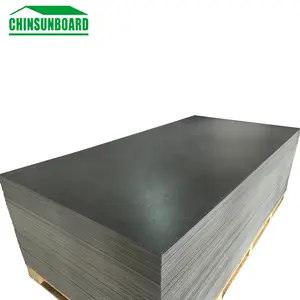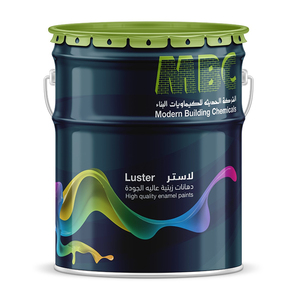
All categories
Featured selections
Trade Assurance
Buyer Central
Help Center
Get the app
Become a supplier

(1707 products available)



























Acrylic adhesive
A fiber cement board glue helps bond materials and gives a strong and lasting finish. Acrylic adhesives can be used in different applications because they are known for their versatility and ability to withstand temperature changes. These adhesives provide a degree of flexibility, which is helpful when different construction materials move or expand because of heat. They also stick to most surfaces, which means they are useful for both interior and exterior installation of fiber cement boards.
Polyurethane adhesive
The polyurethane adhesive is well known for its strength and flexibility. It can be used in many construction applications because of its ability to bond dissimilar materials and resist water. Polyurethane adhesives provide a strong bond that can withstand heavy loads and different weather conditions, making them suitable for outdoor use. Their flexibility also helps them accommodate material movement without causing the bond to break or weaken, hence making them ideal for attaching cement boards in areas where thermal expansion may occur.
Epoxy adhesive
Epoxy glue for a fiber cementboard is made of two components: resin and hardener that form a strong and durable bond when used. Epoxy adhesives are suitable for a wide range of applications and provide excellent resistance to chemicals, heat, and water. They are typically used in areas that require high strength and durability as well as adverse environmental conditions. E.g. coastal regions. Bonding fiber cement boards with epoxy creates long-lasting and reliable joints used in demanding construction applications.
Cement-based adhesive
A fiber cementboard is also referred to as a traditional glue used in many construction processes. It is especially useful when working with tile and masonry, as it provides a firm and solid base for these materials. The most striking feature of a cement-based adhesive is that it cures by water evaporation. This makes it suitable for installations in wet areas such as bathrooms and kitchens. In addition, cement-based adhesives provide good thermal stability, making them ideal for outdoor use.
MS polymer adhesive
Silyl-modified polymer adhesives are a group of adhesives that become increasingly popular because of their strong bonding properties to different materials, including fiber cement boards. These adhesives cure through moisture in the air and create flexible and durable bonds with excellent UV and weathering resistance. Also, they do not contain any solvents that might harm or damage materials' surfaces. Because of this property, modified silyl polymer adhesives are suitable for both interior and exterior applications to provide a bond that can accommodate movement without losing its strength.
Construction Industry
The glue for cement board is widely used in the construction industry where fiber cement boards are commonly used to make external cladding, ceiling tiles, and dry walls. It helps install these boards more easily and enhances their durability and performance. Cement boards are known for their exceptional resistance to fire and moisture and using the right adhesive ensures they are securely fitted in various building applications such as roofing, interiors, facades, and wet areas. Bonding strength and stability are also improved with the glue which increases the overall structure.
Automotive and Transportation
Cement board glues have important uses within the automotive industry, especially with vehicles that require lightweight and strongly built materials to ensure they don't easily get damaged. Fiber cement boards help in making car interiors, panels, and sound insulation therefore this creates a strong need for high performance adhesives to help bond them. Also, glues fill the gap between dissimilar materials to provide the needed rigidity and flexibility for automotive applications. In addition, they contribute to the general safety and performance of the vehicle.
Shipbuilding
Fiber Cement Board is also used in shipbuilding to help make non-conventional interior linings and panels. They are ideal for marine environments because they are resistant to moisture and extreme conditions. The glue provides Secure bonding that helps maintain the integrity of these lightweight but strong panels in the ever-challenging maritime environment. The right cement board adhesive protects ships from warping, mold, and deterioration by ensuring that they are installed and maintained properly.
Manufacturing of Decorative and Architectural Elements
The fiber cement boards are ideal for making decorative and architectural elements such as moldings, facings, and false ceilings in a variety of industrial applications. In such cases, the glue is instrumental in achieving aesthetically preferred finishes while ensuring strength and durability. Cementboard glues help Secure intricate designs and maintain a longer product's life with resilience to moisture and ever-changing weather conditions. This is why they have growing uses in architectural design with builders and designers.
Residential and Commercial Interior Design
Interior design in residential and commercial applications relies a lot on fiber cement boards for they offer stylish and functional wall covering or flooring. Glue for fiber cementboards is essential to the installation of this product as it ensures durability and stability. These boards have easy maintenance, are highly resistant to pests, and are either stylish or modern. Cement boards are ideal for use in high-traffic corridors or public areas due to their hardness and longer life. In addition, they are used in stylish and functional wall covers and flooring in interior design.
Viscosity
The viscosity of glue for the cement board ranges from 5000 to 15000 CPS. This is done to ensure it is easy to spread but thick enough to resist dripping and ensure a good bond. High-viscosity adhesives are suited for vertical installations, while low-viscosity ones are suited for horizontal surfaces.
Setting Time
The setting time for fiber cement board glue differs, but most will set within 30 minutes to 2 hours for initial grab. The full curing process, however, may take 24 hours to several days depending on the humidity and temperature levels. Faster setting times are preferable in situations where quick installations are required.
Temp Range
Cement board glues are formulated to ensure they work well within a specified temperature range of 10°C to 40°C. This means they can be used in different climates, both during construction and once the building is occupied.
Bonding Time
Bonding time describes how long the adhesive can be worked before it sets. For fiber cement board glues, the working time typically ranges from 10 to 30 minutes. This gives the installer enough time to adjust the position of the boards before the adhesive starts to cure.
Water-resistant
The glue for the fiber cement board is made water-resistant, allowing it to be used in high-moisture areas such as kitchens and bathrooms. This prevents the cement boards from warping, deteriorating, and coming apart by ensuring a long-lasting bond.
Easy Application
Most fiber-cement board adhesives use a trowel or a caulking gun for application. They come premixed and easy to apply, therefore requiring no special training or equipment. This helps ensure a more efficient installation process.
Flexibility
The flexible nature of fiber cement board glue allows it to absorb some movements caused by expansion or contraction, particularly in areas susceptible to temperature changes. This helps prevent cracking or separation over time.
Environmentally Friendly
Most modern cement-based board glues are eco-friendly and are formulated without any volatile organic compounds that may affect the environment. This makes them safer both for the users and the environment and for the workers who install them.
Quick Drying
Quick dry time is one of the most outstanding features of cement board glues. Many are able to achieve full curing within a day. This allows the structure to be used shortly after the installation process, thus minimizing delays in the project.
Several key factors need to be considered in order to choose the most appropriate fiber cement board glue for a particular project. Here are a few suggestions:
Bonding strength
Fiber cement board glue should have a strong bonding capacity to ensure the boards are securely fitted. Look for glue products that create strong bonds with cement boards and the substrate on which they will be installed.
Water Resistance
Cement boards are ideally suited for use in humid environments and glue should be water-resistant to prevent bond deterioration in wet regions like bathrooms and kitchens. This helps ensure the boards don't warp or separate within moisture-laden spaces.
Elasticity
Buildings expand or contract depending on temperature and glue must be elastic enough to accommodate such movements. This prevents cracking or coming apart from the space that is created. Such flexibility is especially important in areas that are subjected to direct sunlight.
Compatibility
The glue must be compatible with the type of cement board being used. Fiber cement boards come in varying thicknesses and compositions and the glue must meet the manufacturer's requirements. Developers should consult with the board manufacturers to ascertain the type of adhesive that should be used.
Simple Application
The glue should be easy to apply. This helps make the process of installation easier and save time. Also, developers should consider the setting time or how long the glue takes before it hardens. Quick setting may be preferred in fast-paced projects, but they should not be so quick as to allow little room for adjustments during installation.
Environmental Safety
Developers should opt for glues that contain low volatile organic compounds. This ensures indoor air pollution is curbed during and after installation. Always go for eco-friendly products to protect the environment and the glue applicators.
A1: Fiber cement board glue is a strong adhesive specifically designed for cement boards. It securely bonds boards to various surfaces, ensuring stability in construction projects, especially in wet and dry environments. The glue fosters the long-lasting nature of the boards which makes them ideal for use in building applications such as sidings and ceilings.
A2: Fiber cement glues contain several key ingredients: Resin is a major component that forms a strong and flexible bond with the fibers and cement. Polyurethane based resins are common due to their superior water resistance and flexibility. Secondly, Synthetic fibers like aramid or polyester enhance tensile strength and elasticity within the glue. Then, additives such as detergents improve the mixture's workability. Fillers like silica are added to improve viscosity and stabilize the formula. Finally, hardeners are added to promote quick curing.
A3: Cement board glue comes with as many benefits as it does drawbacks. A few include tightly securing tiles and cement boards and easily filling gaps between uneven surfaces. Additionally, the adhesive is flexible enough to accommodate the normal expansion and contraction of materials. On top of that, it is resistant to water, chemicals, and in particular in high humid areas, while its elasticity prevents cracking and ensuring longer durability. Moreover, unlike other bonding methods, it distributes stress more evenly across the surface.
A4: Despite their many advantages, fiber cement board glues also come with a few disadvantages. For instance, their initial cost may be higher than ordinary installation methods. Furthermore, they also need proper surface preparation in order to bond effectively. If the surface is contaminated or not level, the glue will not bond properly. Also, some adhesives release volatile organic compounds during installation that may be harmful to the environment.
A5:To effectively deal with the challenges associated with fiber cement board adhesives, buyers have to take several measures. First, they have to ensure they adequately prepare the bonding surfaces before application. This helps improve the glue bond. Then, they need to carefully select low VOC adhesives in case they're concerned about indoor pollution. They should also ensure appropriate strain on the application to attain the desired elasticity and strength. Moreover, they should consider cost-effectiveness over the life cycle of the product as opposed to focusing solely on up-front costs.